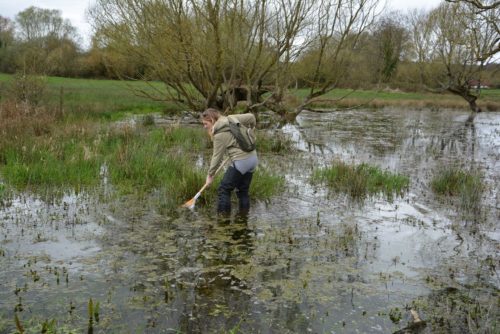Collaboration of farmers and land managers features heavily in the initial discussion document for the new Environmental Land Management scheme – see blog.
Many farmer-led landscape-scale conservation groups across England are participating in Phase 1 and Phase 2 of the ELMs Tests and Trials programme, which will inform the design of key elements within the scheme. Inevitably, the emergence of COVID-19 will cause some delays to delivery of Defra’s T&Ts, but work is continuing where possible. Let’s have a look at some of the projects going on:
Romney Marsh Farmer Cluster
The Kent and Sussex Wildlife Trust have been awarded funding to set up a new farmer cluster in Romney Marsh, Kent. One of the key outcomes of the project will be to understand what motivates farmers and landowners to work collaboratively, and provide a platform for them to share expertise and discuss ELMs. In order to deliver public goods at a landscape scale the cluster will agree local priorities, share resources & experience, and implement a programme of meetings, training/knowledge sharing events and farm visits throughout 2020.
South Downs National Park Clusters
Six farmer clusters from the South Downs National Park took part in a series of workshops to discuss and answer questions around the use of Land Management Plans (LMPs), which is one of the key features of ELMs. LMPs will set out the actions they want to take on their farm to deliver ELM outcomes. They were consulted on the type of plan that would be needed, the specialist advice required to develop and monitor progress against them and the role of farm clusters/landscape scale projects in ELM design and delivery.
The key findings from the workshops which had around 140 attendees, were that the farmer’s plans should be simple, concise, flexible, and map-based and should be used throughout an agreement to apply, implement and monitor that agreement. The consensus on advice was that it should be optional for access to the scheme, that local knowledge was critical, that advice should be ongoing throughout agreements and there was support for accreditation. Participants felt that farm clusters were beneficial for knowledge sharing and collaboration towards objectives and that they should be supported financially in recognition of this.
Pond surveys © Peter Thompson
Trying out farm wildlife surveys
Farmers from the Pewsey Downs Farmer Group, Stour Valley Farmer Cluster, Chalke Valley Farmer Cluster, Eastern South Downs and Christmas Common are participating in a number of farm wildlife survey workshops in 2020 organised by GWCT. Each workshop will teach a simple monitoring or surveying activity, and afterwards the participants go and try it on their own farm. Some of the methods that farmers are being taught how to do include the Partridge Count Scheme, Big Butterfly Count, earthworm counts, pond surveys and breeding bird mapping. GWCT staff will verify the data and do a recount for a small proportion of participants, to see how accurate self-monitoring is, and capture detailed feedback via questionnaires and in group discussions.
Glancing at the big list of T&Ts, it’s clear that many projects are tapping into farmer groups as a structure to test ideas and gather participants to try out elements of scheme design. The feedback and results collected from all of these projects will hopefully better inform the options included within ELMs and will encourage more widespread participation in environmental monitoring and landscape scale conservation efforts through cluster groups.
Written by Jess Brooks & Amber Lole

